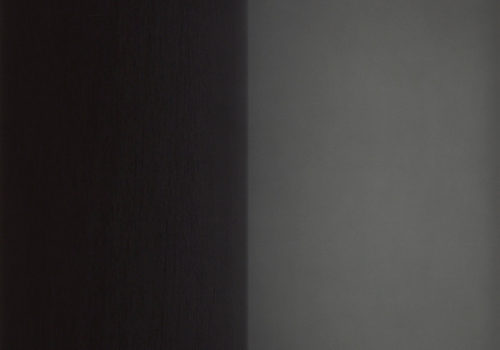Hiroshi Sugimoto only sees the world in large format. From a distance, behind the huge panes of his studio, the buildings made of glass, symbols of an ultramodern and denatured New York, appear as blocks of Lego. The Japanese photographer pulls exactly the same view out of a drawer, a panoramic image made up of three negatives sellotaped together, reminding us of the city’s architecture of a decade ago. They’re from a time when wooden water towers were the most picturesque structures in this centre of the world. Sugimoto’s gaze is touched with nostalgia, an unconditional love of nature and lost traditions.
Sugimoto has been reflecting on the passing of time for more than fifteen years. Almost out of obligation, he has set up headquarters in Chelsea. As his name suggests, he was however born in 1948 at the other end of the world. The eldest in a family of Tokyo pharmacists, he discovered photography in the way many autodidacts do, by pinching his first camera from his technology mad father, “because in any case it was too complex for him”. The little Hiroshi was then just twelve and loved anything to do with working with the hands. At thirteen he already had his own dark room and his passion for photography was combined with another passion, one for trains. He observed their comings and goings religiously in stations but he also collected models of them from early childhood, models made in Japan by Yama. They were his first subjects and “could yet become subjects of the future too.”
In Japan, Hiroshi Sugimoto later followed a course of studies in Marxist economics and joined the revolutionary movements of 1968, “not with the soul of a leader but rather that of a disciple”. It was in Los Angeles and then New York that he first observed a form of art that was then in its minimalist and conceptual stage. Sugimoto began to appreciate it in attending the exhibitions of the time and then he continued his studies in the two American cities that were to inform his spirit and bring his artistic ambition to the fore. “In Los Angeles,” he recalls, “I trained as a photographer but I had other ambitions. Above all, I saw fashion or advertising photography as a way of earning a living. At the time, I didn’t think that there could be a future in photography as an art form. When I came to New York in the Seventies, certain works hit me straight off. Something happened for me then and I started to believe it was possible, even though the trend was quite a new one.”
He rapidly turned towards abstract, conceptual forms, towards minimalism and surrealism, in the search for “ways of transposing thought or philosophy into visual art works.” It wasn’t so much the idea of complexity, that received idea associated with contemporary art, that attracted him, but more the opportunity to represent the imagination or materialise his dreams, that same power that allowed Duane Michals, in one of his most astonishing series of photos, to stage the human soul. “Following these discoveries,” said Hiroshi Sugimoto, “I had already sort of abandoned the idea of being a photographer. I wanted to be a thinker, a contemporary artist. Of course, photography is still my medium but, to my mind, there are a few differences between recording reality and recording thought.” As for speaking in depth on his taste for surrealism, Sugimoto instead calls to mind his memories as a veteran of the Sixties, the Flower Power Movement in California, the blossoming of revolutionary ideas and all sorts of drugs. “That was Surrealism! I really studied those drugs. I tried them out one by one with the aim of fixing what it was about them that interested me, the power of each of these little objects in my mind.”
Read the full article by Jonas Cuénin in the French version of Le Journal
Hiroshi Sugimoto, Revolution
Espace Van Gogh, Arles
Du lundi 1er juillet au dimanche 22 septembre 2013
10h – 19h30
8 € (le billet inclut une entrée à l’exposition “Couleurs de l’ombre” d’Hiroshi Sugimoto à l’Église Saint-Blaise)
Hiroshi Sugimoto, Colors of Shadow
Église Saint-Blaise, Arles
Du lundi 1er juillet au dimanche 22 septembre 2013
10h – 19h30
8 € (le billet inclut une entrée à l’exposition “Revolution” d’Hiroshi Sugimoto à l’Espace Van Gogh Sud – 1er étage)
















